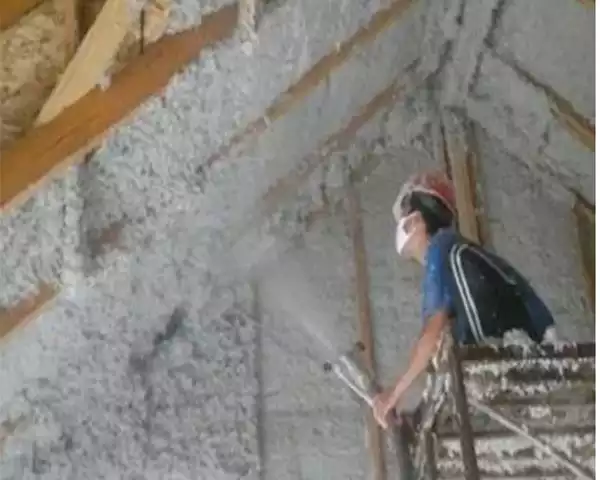How Does Fire Retardant Paint Work?

The question of how fire retardant paint works might be on your mind. Fortunately, there are many benefits to intumescent paint. It is easier to apply, reduces smoke, and is resistant to flames. You can also use it to make your house safer, but you must know the proper application process. Read on to learn more about the benefits of fire retardant paint. Here are some tips to follow when painting your home or building.
Intumescent paints char when exposed to flames
The primary purpose of intumescent paints is to slow down the collapse of buildings during a fire. They provide more time to evacuate or fight a fire and can be used for a variety of applications. Intumescent coatings can vary in formulation material and composition, depending on the base resin system, curing mechanism, and application process. Environmental service conditions and regulations can also influence the choice of raw materials.
Intumescent paints work by forming a layer of carbonaceous char on a substrate when exposed to fire. This layer of char acts as a thermal and physical barrier, preventing heat from spreading from the fire to the interior or exterior surfaces. It also protects the structural member from damage. Typically, an intumescent paint is 40 mils thick, but it can expand to more than an inch, which is a significant amount. Once the expanded foam is removed, the substrate can be cleaned and repainted with another FR coating.
One of the primary uses of intumescent paints is as an aesthetically pleasing finish for structural steel members. In contrast to typical spray-applied fireproofing, which provides a spongey finish and requires a finished surround, intumescent paints char when exposed to flames. These coatings are applied in layers and are usually mixed with pigments to create a uniformly thick layer of paint.
Intumescent paints are easier to apply
Intumescent paints are much easier to apply than standard latex or acrylic finishes. They are typically made of a series of chemicals suspended in a binder. When exposed to heat, the chemicals react with the binder and release vapors, transforming the paint into an insulating black substance. This insulating layer protects against fire by expanding. Intumescent paints are also easier to apply than conventional paints.
Intumescent paints are more difficult to remove than conventional types of paints. Their adhesion is dependent on the coating thickness and the substrate. The thicker the coating, the more resistant it is. Test methods include the pull-off adhesion test and the tape test. In both tests, a special tape is used to pull the paint from the surface. The tape test is used to determine how well the coating adheres to the substrate. Pressure is applied until the bond between the paint and the substrate fails.
Intumescent coatings are available in several types. There are specialized paints for marine and transportation applications, as well as in the oil and gas industry. Thicker films have a higher resistance to fire than thin ones. Thick intumescent paints are more difficult to apply, but they’re easier to maintain and are often a better choice for high-rise buildings and marine applications. They are more durable and have lower expansion ratios than their thinner counterparts.
They reduce smoke
A fire retardant paint is a substance used to slow the spread of a fire. Usually applied to the structural timber of a building, it prevents smoke and toxic fumes from escaping from a structure in the event of a fire. As fire-related fatalities and injuries are largely attributed to toxic fumes and smoke, a fire retardant paint can be very important to the safety of your home or business.
Fire retardant paint has several advantages over traditional paints. Fire retardant paint slows the spread of flames and smoke while maintaining the look of your home. These paints are also highly durable and meet building codes. However, fire retardant paint does not mean a building is fireproof, nor does it have any other safety feature. In fact, fire retardant paint helps to reduce the damage caused by fires by significantly slowing the spread of flames.
Fyretard is a fire retardant paint that contains special additives and non-flammable base. Compared to ordinary paint, Fyretard reduces the spread of fire. As a result, fires are easier to control and tend to cause less physical and financial damage. Because normal paint combusts spontaneously, the fire retardant paint has the opposite effect. It causes intense heat to be conducted through the metal and bursts into flames.





